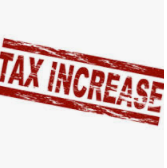 2. REQUIREMENTS FOR LIABILITY
2. REQUIREMENTS FOR LIABILITY
§ 5:3 In general
There are two major tests to determine if someone is subject to the provisions of IRC § 6672. They are primarily questions of fact and may be stated as follows:
(1) Whether the party against whom the penalty is proposed had the duty to account for, collect, and pay over trust fund taxes; and
(2) Whether he or she willfully failed to perform this duty.
During the course of this text we will extensively discuss these two tests and the manner in which the courts have interpreted them. In general, the Internal Revenue Service has the right to pursue any person who meets the tests, even if he was not an officer or employee of the corporation which originally collected the taxes. In fact, on many occasions the Internal Revenue Service has asserted the penalty against accountants and attorneys who were not employees of the collecting corporation.
§ 5:4 Assessment against several persons
The penalty can be assessed against more than one person. It is not unusual for the Internal Revenue Service to assess the penalty against several responsible persons. In the event that the IRS; assesses several persons, it may collect the entire liability from any of those persons. Although the Service has a policy of not attempting to collect more than the total amount of the withheld taxes [IRM P-5-60, dated February 2, 1993], it consistently errs and collects more than the penalty from the various officers. This occurs because the Internal Revenue Service has never established an adequate system to control and coordinate the collection of the Trust Fund Recovery Penalty from several persons. In the event that such an over collection occurs, the respective parties would have the right to request a partial refund from the Service, but the process is long and involved, and the Internal Revenue Service is less than helpful. Generally, the last person who paid after the full collection of tax would be entitled to recovery.
♦ EXAMPLE 1. Two persons are each assessed a Trust Fund Recovery Penalty of $1,000 for liabilities of their former company. Taxpayer A pays $950. The IRS then collects $500 from taxpayer B. B would be entitled to a refund of $450. A would not be entitled to recover any monies from the IRS since he or she had the misfortune to be the-first to pay; Pursuant to TBR2 A would have the right to sue B for contribution [IRC § 6672(d)]
This chapter will cover several areas regarding the Trust Fund Recovery Penalty. It will begin with an analysis of illegal tests of responsibility and willfulness. It will then turn to the manner, in which the IRS applies payments made by the collecting corporations This chapter will also cover the methods used by the Internal Revenue Service to investigate potential responsible persons, how to represent your client, and defense tactics.






















Recent Comments